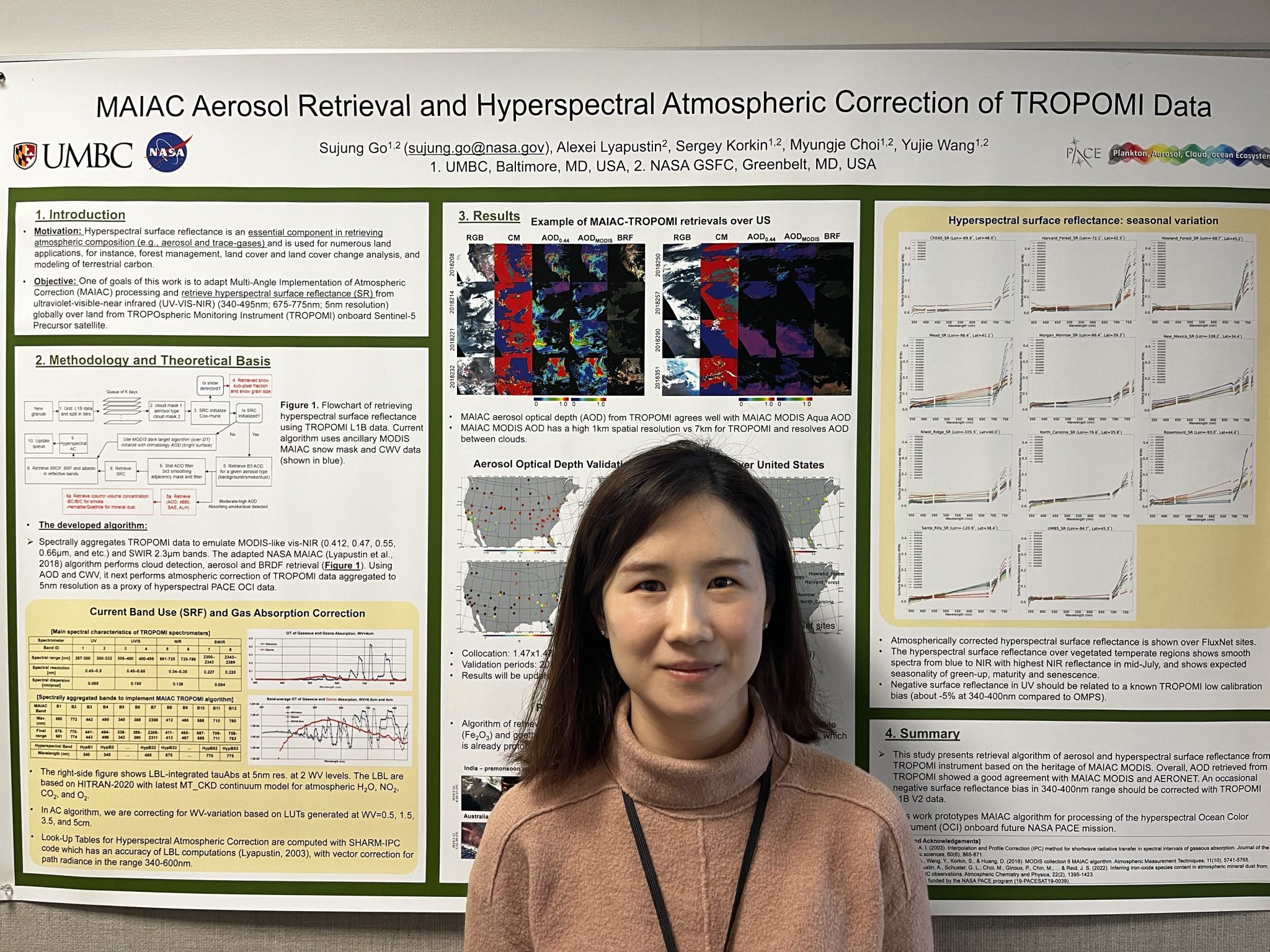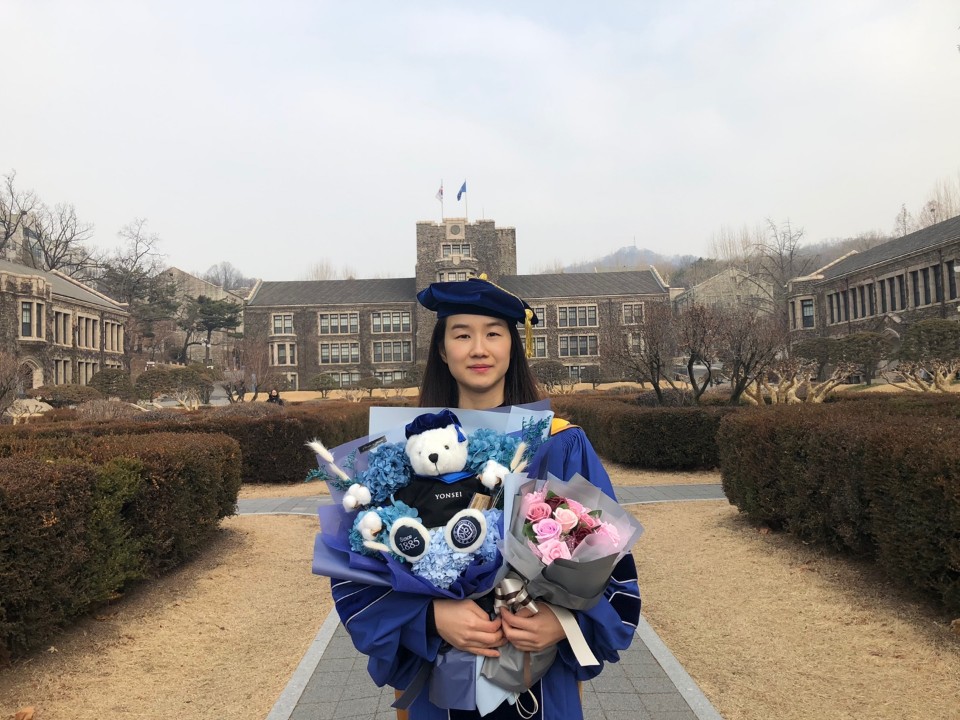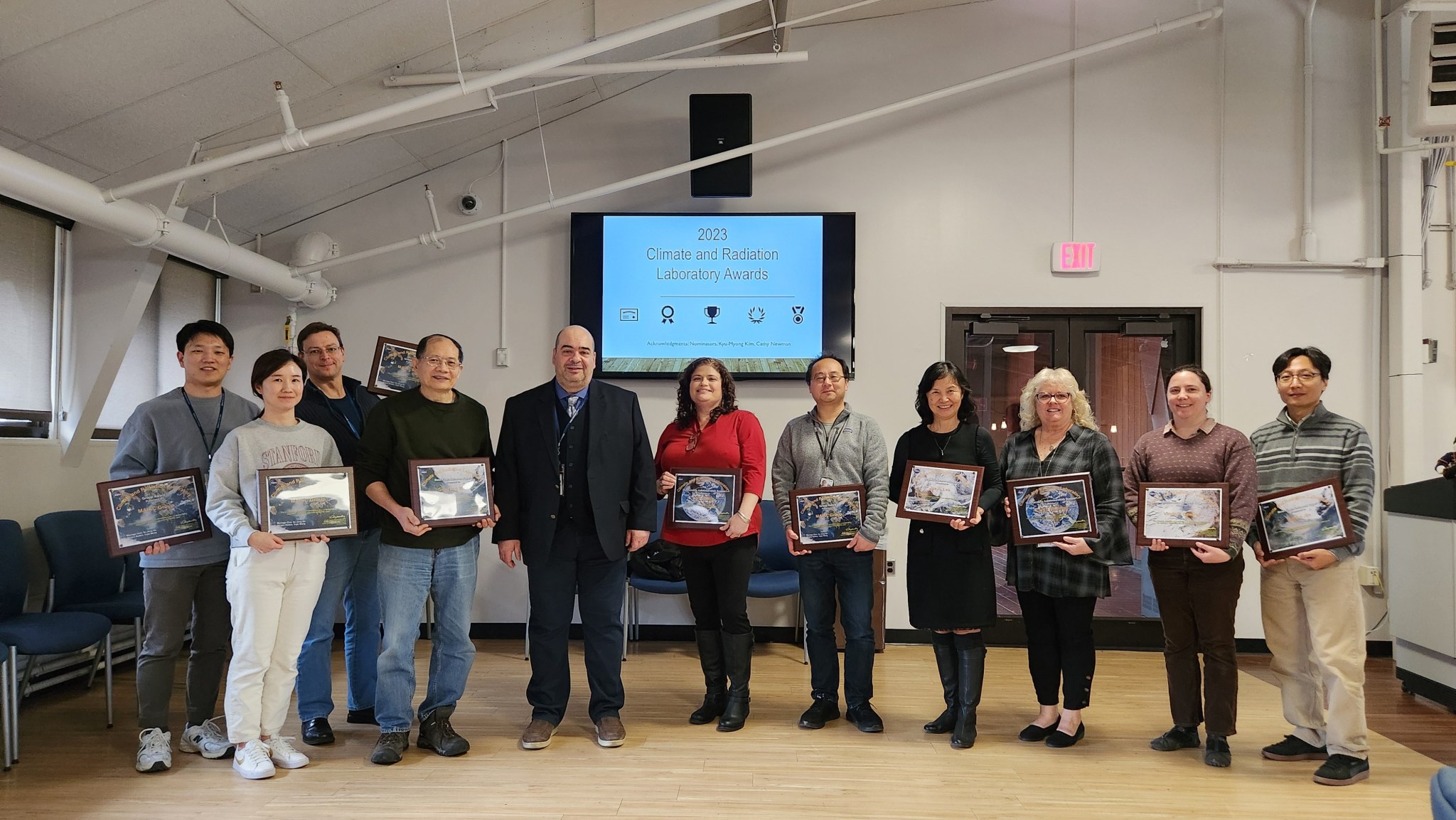Research scientist Sujung Go analyzes atmospheric data to help humanity and the environment.
Name: Sujung Go
Title: Research scientist
Organization: Climate and Radiation Laboratory, Earth Sciences Division, Science Directorate (Code 613), via UMBC and the GESTAR II cooperative agreement with NASA Goddard
What do you do and what is most interesting about your role here at Goddard?
I work in the team of Dr. Alexei Lyapustin and support data analysis and processing algorithms for different missions including DSCOVR EPIC, TROPOMI and PACE. I focus on aerosol retrievals and further analysis of absorbing aerosol composition in mineral dust. I also work on hyperspectral atmospheric correction of TROPOMI and PACE OCI data. These subjects are quite novel for the remote sensing community at large – that’s what makes it so interesting.
What is your educational background?
I got a bachelor’s, master’s, and, in 2020, a Ph.D. in atmospheric science from Yonsei University in South Korea.
What brought you to Goddard?
When I was getting my Ph.D., I was working on the Geostationary Environment Monitoring Spectrometer (GEMS) satellite for the Ministry of Environment of South Korea. During my final year, my professor, who was the principal investigator of the GEMS project, invited my current supervisor at Goddard, Alexei Lyapustin, to visit our laboratory to foster collaborations on satellite aerosol retrievals. Several months later, Alexei offered me a research scientist position in his group. I came to Goddard in March 2020.
Did you continue working on GEMS after you arrived at Goddard?
GEMS is a South Korean instrument which is identical to NASA’s Tropospheric Emissions: Monitoring of Pollution (TEMPO) mission. GEMS was launched in February 2020. Since I had worked on GEMS while getting my Ph.D., the GEMS project asked me to help with the initial in-orbit test period for about a month. TEMPO was launched in 2023, and I hope to also be involved with their data analysis both on aerosol and surface reflectance retrievals.
What was most fascinating about your first project at Goddard, determining the mineral composition of atmospheric dust?
Hematite (Fe2O3) and goethite (FeOOH) are the two major absorbers of visible solar radiation in atmospheric dust. Variations in their concentration control dust radiative (climate) effect defining how much of sunlight dust scatters back to space versus how much it absorbs. Most climate models assume the same distribution of iron oxides in airborne dust globally, and thus knowledge of the real distributions, which we can get from satellites, would be very valuable.
Alexei developed the algorithm to retrieve aerosol loading, spectral absorption and even average height of aerosols from the DSCOVR EPIC instrument, which observes the entire illuminated part of the Earth multiple times a day from its orbit at Lagrange point 1, a spot between Earth and the Sun about 900,000 miles away from our planet. He suggested that I look into how we can use this information to derive hematite and goethite concentrations based on ideas from the earlier works of Dr. Greg Schuster from NASA’s Langley Research Center in Virginia. Greg pioneered such aerosol composition analysis based on AERONET data. It was a pleasure to work with Greg who helped me to fully understand the problem.
It took a while, and I was so happy when in the end it worked. It was fascinating! So exciting!
What is special about your work on hyperspectral atmospheric correction for the PACE mission?
Technically, it’s a very challenging problem and it was never done before in operational settings. We are dealing with very large volume of data, and need to have an accurate radiative transfer across the full UV-visible-shortwave IR spectral range and a very efficient algorithm. From well-calibrated PACE OCI (Ocean Color Imager), we expect to produce high quality land surface reflectance spectra while the PACE ocean team will deliver spectra of the ocean water-leaving reflectance. These data will provide a wealth of information for the ocean biology community, like composition and life cycles of ocean microorganisms, and for the land vegetation community to help better characterize the state and function of vegetation and improve the knowledge of the global carbon cycle as a result.
What makes your research interdisciplinary?
What we measure from space is a contribution from both atmosphere and the surface. We need to know surface properties to get information about aerosols, and we need aerosol information to retrieve spectral surface reflectance. The problems are inter-related and rooted in how we separate atmospheric and surface signals in satellite measurements. To do both aerosol and surface retrievals accurately, and especially working with applications like composition of absorbers in aerosols, or assessing vegetation greenness and other properties, I need to be truly interdisciplinary.
What has your mentor, Alexei Lyapustin, taught you?
I am always motivated by his scientific insights. I am really happy that I can learn such high-level science from him and help contribute to scientific findings that help humanity.
I started working at Goddard only two weeks before the lockdown, so I hardly knew any of my colleagues. During that time, Alexei kept our team together, helped us form connections with each other, and made sure that everyone was safe. All of my family is in South Korea, and Alexei made me feel like part of his lab’s family.
I sincerely thank Alexei for all he has done for me and for our lab.
Who inspires you?
I have had several different mentors in my life. First of all, my mother was always dedicated to my education. Second, when I was in middle school, one of my teachers, who taught me science for three years, made it possible for me to attend a science high school in South Korea, which changed my perspective toward life totally. She felt that I had a talent for science, and I was very interested in science. Lastly, my Ph.D. advisor inspired me to have job responsibility as a scientist as well as getting my Ph.D. I am grateful for everyone’s help.
What do you do for fun?
I enjoy hiking. I am also trying to improve my cooking skills by watching online cooking channels. I am working on American and Korean recipes. I make something new every weekend. Some of my friends who are good cooks are coaching me. We get together over holidays to enjoy delicious food together.
What is your “six-word memoir”? A six-word memoir describes something in just six words.
Optimistic. Life-long learner. Thoughtful. Visionary. Prudent. Persistent.
Do you have a favorite saying?
Life is about doing whatever you want to do. Alexei often says learn something! Our team is always optimistic and enthusiastic.
What is your goal as a scientist?
I want to be a scientist who can provide or suggest what we really need to help human beings and the environment. Working at Goddard is a great opportunity to become a scientist who can provide essential research to help humanity. Goddard has an unparalleled expertise in satellite data processing, in particular in atmospheric and biospheric sciences, and this helps and motivates me.
By Elizabeth M. Jarrell
NASA’s Goddard Space Flight Center, Greenbelt, Md.
Conversations With Goddard is a collection of Q&A profiles highlighting the breadth and depth of NASA’s Goddard Space Flight Center’s talented and diverse workforce. The Conversations have been published twice a month on average since May 2011. Read past editions on Goddard’s “Our People” webpage.


























